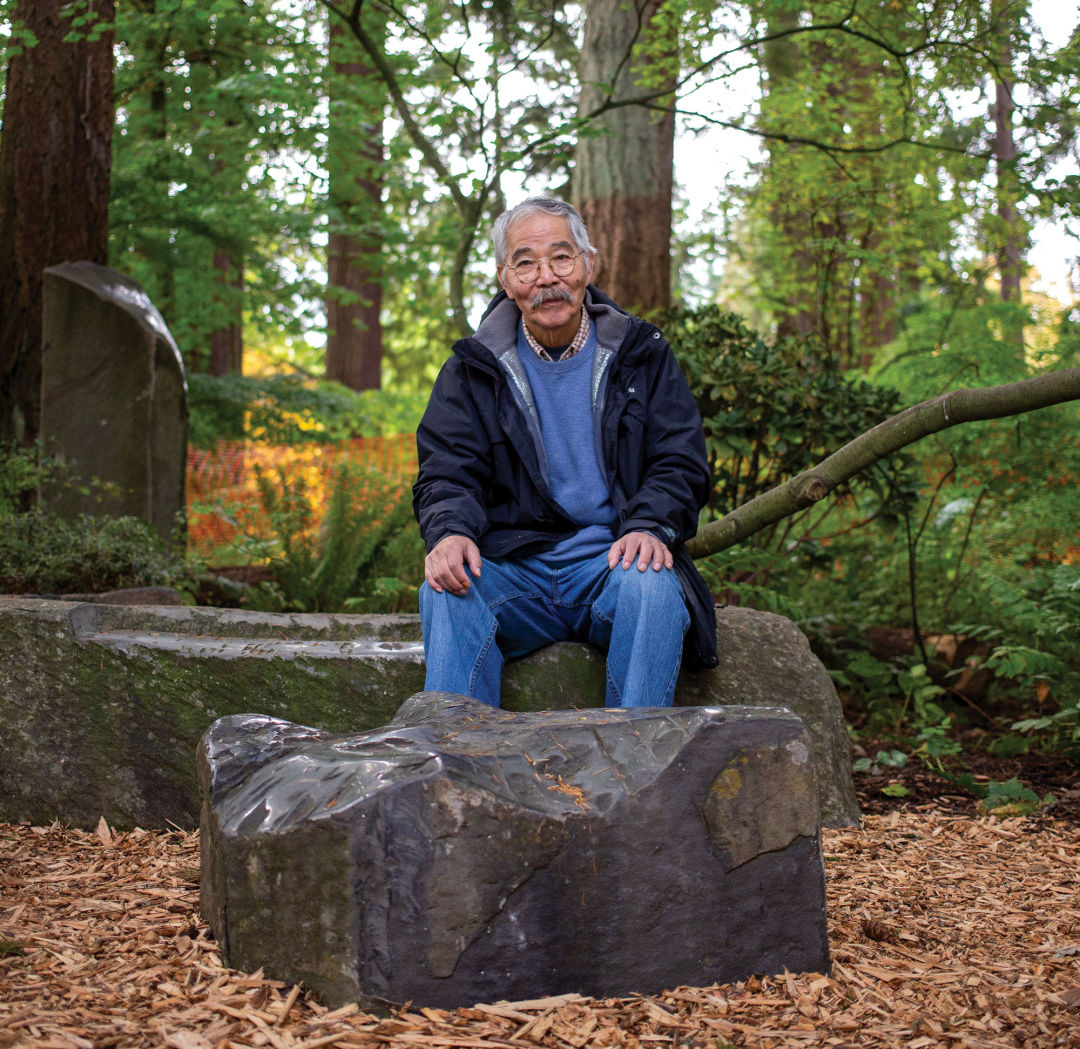Displaced by a Skate Park, a Treasured Piece of Public Art Finds a New Home

Scupltor Michihiro Kosuge with part of Contemplative Place, his installation at Leach Botanical Garden
Image: Brian Breneman
Philosophy undergrads and fans of Diablo Cody’s criminally overlooked Tully, rejoice: we’re about to talk about the Ship of Theseus. The thought experiment, which dates back to Plato, goes like this: if a wooden ship gets replaced board by board until no original parts remain, is it the same ship it used to be?
Here’s a Portland corollary. Local sculptor Michihiro Kosuge—whose work is all over town, including at the Portland Japanese Garden and Portland Art Museum—built a Stonehenge-esque installation called Contemplative Place at Ed Benedict Park in outer Southeast in 1996. The piece, which features four basalt columns representing the cardinal directions, plus smaller boulders for sitting, was meant as a refuge for emergency workers at a nearby 911 dispatch center.
It worked well enough until 2009, when a skate park opened up next door. A new influx of graffiti, trash, and foot traffic, plus an uptick in development on SE Powell Boulevard, started to make Contemplative Place’s placement a lot less contemplative.
“It’s not to say that we don’t love the skate park,” says Keith Lachowicz, the Regional Arts & Culture Council’s public art collections manager. “But in hindsight, it might’ve been better to put some more space between the two.”
Lachowicz and his RACC cohorts spent years in search of a suitable replacement site, eventually landing on the tucked-away Leach Botanical Garden, a green respite off busy SE 122nd. This summer, they picked up Kosuge’s sculpture piece by piece and transported it to the new site with help from a Clark County company called Stone Sculptures Inc. It took four weeks and cost just shy of $30,000.
To return to Theseus: if Contemplative Place’s placement is no longer contemplative, and it’s moved to a new, more contemplative place, is Contemplative Place (in its new place) a new piece of art?
Kosuge thinks so, though he hardly sees that as a bad thing—to him, public art is in constant flux. “Sometimes trees die or shrubs are cut out. Things may happen,” he says. “But I don’t worry about it. Change is always there.”
He’s particularly excited about the new site’s integration with nature—at Ed Benedict, the sculpture existed beside the foliage; at Leach, the two are intertwined. On a recent visit, a garden staffer told him they’d found a nude woman sitting in the installation a few days ago. Kosuge smiled: “I’m really proud of that.”




